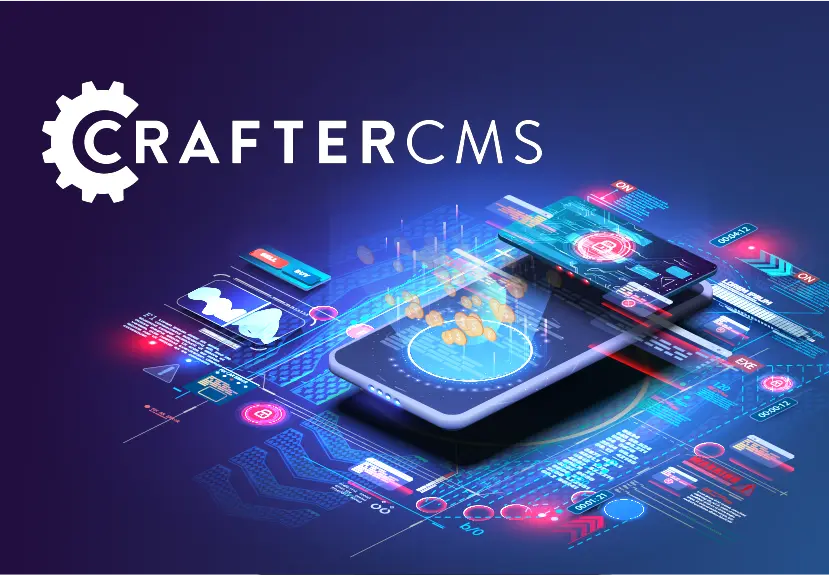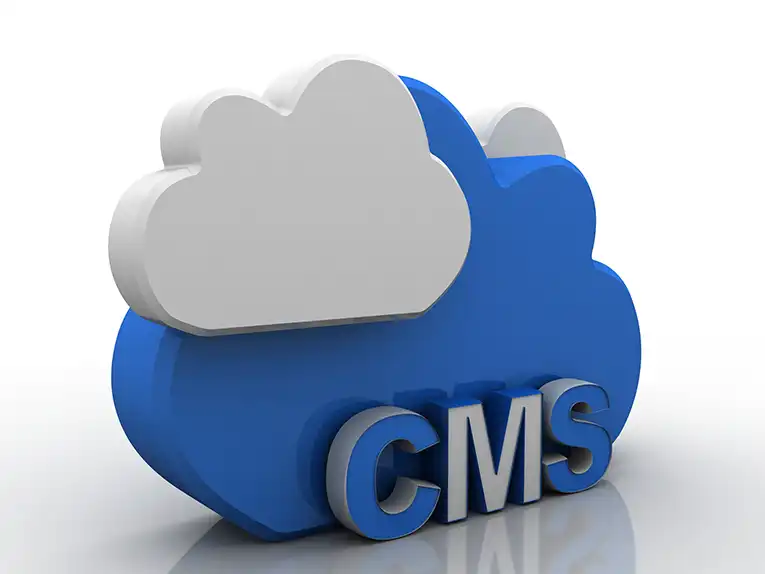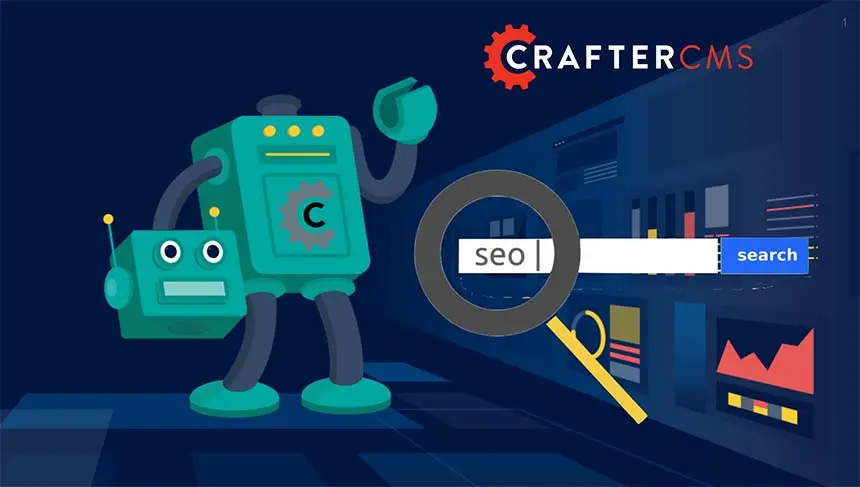What Is a Composable DXP?

Sara Williams

With the proliferation of digital channels, the world around us has changed drastically. Consumers are craving multiple experiences that span not only websites but also mobile apps, e-commerce, AR/VR, OTT video, IoT-connected devices and more. These consumer cravings are placing enormous pressure on application leaders. But unfortunately, they are unable to meet the demands of the market and their business objectives with their current tech stacks.
Many enterprises rely on monolithic platforms, but now they need to be able to deliver composable user experiences and future-proof their tech stacks against continued change. According to Gartner, by 2023, 60% of organizations have strategic goals to “seek composability in new application investments.” However, current monolithic digital experience platforms (DXPs) are slow to react to changes in the market and hinder any prospect of innovation.
So how can organizations meet these challenges? A composable DXP can provide the answers, and in this article, we’ll explain more about it, the benefits it can offer and what it means for the content management industry.
What Is a Composable DXP?
A composable DXP is a solution built from best-of-breed systems that are easily integrated and uniquely meet the requirements of an enterprise. The key to making a DXP composable is that the integrations must be quick, easy, secure, and scalable.
In general, the future of content applications and tech stacks needs DXPs to be decomposed into a set of packaged business capabilities. For example, it’s better to utilize a best of breed CMS instead of a mediocre CMS built into a monolithic DXP. This enables tech stacks to be modernized and redesigned with purpose-built, task-oriented business processes. Rather than just combining a suite of applications with some unnecessary capabilities, organizations have the flexibility to include only what is most relevant to their needs. They can also combine these elements in an agile and incremental way.
Composable DXP vs Composable Experience
A composable DXP should not be confused with a composable experience. While a DXP is a platform, a composable experience is a site or app that a CMS or DXP can construct. The DXP, in this instance, supports component reusability, site blueprints, code and content reuse, drag and drop experience building, and such, all of which allow users to compose entire customer experiences much more quickly and efficiently. The reusable components must be well-architected and provide compatibility across versions.
Achieving these composable experiences means that a DXP stack should be modernized to decouple the front-end delivery layer from the backend systems exposed via APIs. This enables better agility for internal teams and provides more options for channel delivery.
Organizations also need to be able to choose whether they want to build or buy specific products to support their needs. A composable DXP also enables customers to select and personalize the type of experiences they want. However, to accomplish that, the underlying technology must support the people and processes within the organization.
Technology Requirements for a Composable DXP
Three components combine to create the foundation for a modern digital experience platform: content management, presentation and personalization. These components enable organizations to remain agile and orchestrate the types of experiences their customers desire. For a platform to be considered a composable DXP, it should provide the following:
Frontend Flexibility
For customers to select the types of experiences they want, businesses need to deploy content to various channels. Everything from a website to a mobile application to a tablet, smart TV, digital sign or several other IoT connected devices is fair game. However, each of these different channels requires developers to use various frontend technologies and frameworks to customize the experience.
A composable DXP should enable developers to decide whether they want to use React or Vue that they may already be comfortable with, or experiment with Nuxt, Next or another technology that might be better suited to the job.
Marketer-friendliness (Low-code / No-code)
Modern businesses continue to search for ways to streamline their internal processes and remove some of the burden from their IT departments for deploying digital experiences. Marketer-friendly features that support the movement towards no code and low code processes, with native support for reusable plugins and blueprints, easy-to-use drag-and-drop experience building, and multi-channel preview -- all can enable marketers to quickly deliver the types of experiences that customers want.
API-first
A composable DXP also needs to provide APIs that facilitate easy integrations with third-party applications. While the primary purpose of a DXP is content management, monolithic DXPs have touted their ability to provide analytics, marketing automation and several other features in an all-in-one platform.
Unfortunately, in many cases, these additional native tools may be underwhelming. With a composable DXP, brands should take a modular approach to adding analytics, personalization, automation tools and more that are better suited to their specific needs than native applications in a suite platform.
Personalization
Personalization at the level expected for digital experiences today requires brands to increase their content velocity. Marketers need to be able to produce more content at scale without worrying about being slowed down by code updates from IT departments impacting what they can do to achieve this level of personalization. CrafterCMS addresses these concerns through DevContentOps, which includes content management tools and processes in the DevOps equation, enabling continuous integration and delivery geared towards content applications.
Composable DXP vs Monolithic DXP (Challenges of Monolithic Platforms)
While monolithic and composable DXP platforms both help organizations manage digital experiences, they differ significantly in their makeup. A monolithic DXP is an integrated suite built by a single vendor that tries to do several things at once by including pre-integrated functionalities in addition to content management. Even worse, many of these legacy DXPs (such as Adobe AEM) are cobbled together from a variety of different products that were acquired separately and integrated as an afterthought.
These functionalities include analytics, digital asset management, personalization and more. However, it may not be the best at any one feature, leaving organizations with an average all-in-one platform. Choosing a monolithic DXP can present the following challenges:
- Organizations may struggle to adjust to changes in the market or deliver digital experiences at the speed they require.
- Vendor lock-in prevents businesses from adopting more modular approaches to building their technology stack.
- Innovation gets slowed down as it becomes more expensive to replace existing technology.
- Integrations and new technology rollouts can be cumbersome and time-consuming due to the restrictive nature of the suite platform.
With a composable DXP, these challenges can be avoided, and organizations can also expect several benefits.
Benefits of a Composable DXP
The microservices-based approach of a composable DXP provides several benefits that can help organizations enhance their digital experiences.
Customer-centricity
Putting the customer first is essential for modern businesses. They need to be able to choose the channels they want to view, touchpoints where they want to interact and generally decide on their own customer journey, not the journey you want them to be on.
A composable DXP facilitates this and enables your team to respond to gain a deeper understanding of the customer, respond to changes in customer behavior and provide the omnichannel experience they want.
Flexibility
If developers need to add a new feature or integration, a composable DXP makes it easy for them to do so. Suppose a new integration doesn’t seem to be the right fit for your organization. In that case, it’s easy to replace it and change course and make adjustments, whether that adjustment comes as a result of market changes or an incompatible piece of technology.
Customizability
Customizability enables you to select the best-of-breed technologies and create the tech stack, and internal user experiences most suitable for your employees without being restricted.
Implementation Speed
Speed is a critical element of today’s digital experiences. The fastest company can capture market share and shape the customer’s viewpoint. A composable DXP enables organizations to quickly create experiences and deliver value for their customers.
Compose Your DXP With CrafterCMS
The current industry movements towards best-of-breed systems and headless architectures enable enterprises to tailor solutions that fit their specific needs. Therefore you need a platform that supports these trends to use as the foundation for your composable DXP.
CrafterCMS is a headless "plus" solution that includes a plug-in system and marketplace that uniquely supports both composable content authoring experiences and composable end user digital experiences. Organizations can integrate complementary technologies that help support their business objectives and future-proof them against the fast-changing market.
Crafter meets all of the technical requirements for a composable DXP, including:
- Marketer-friendly: Marketers can independently create, publish and update content without waiting on developers to assist them. WYSIWYG editing and in-context previews enable them to manage, optimize and publish content for multiple channels.
- Developer-ready: Whether they want to use Javascript frameworks like React, Vue or Angular or HTML5 templates for the frontend, and whether they want to use Groovy, Node.js or Java/Spring for their backend, developers can rely on the flexibility of an API-first CMS that features both RESTful APIs and GraphQL support.
- Marketplace of Reusable Components: The Crafter Marketplace facilitates easy creation and composability of modern digital experiences using reusable plugins and blueprints.
- DevContentOps: Facilitated by its Git-based repository, CrafterCMS supports DevContentOps processes that enables content teams, software development, and devops teams to collaborate and work together with zero friction. Content and code can flow seamlessly together, removing the interruptions and bottlenecks imposed by database-centric, monolithic CMS architectures that hinder marketers and developers from building and delivering great digital experiences with speed and at scale.
Ready to build your composable experiences using CrafterCMS? Learn more about Crafter by reading our whitepaper: Building and Optimizing Multi-Channel Digital Experiences.
Related Tags
Related Posts

Building Personalized Digital Experiences for a Cruise Liner

Sara Williams

CrafterCMS Wins More G2 Awards Spring 2024

Amanda Lee

What Is a Cloud CMS? (Unlocking the Benefits of a CMS in the Cloud)

Sara Williams

Headless CMS SEO (How to Do SEO Right With a Headless CMS)

Amanda Jones
Related Resources
-

Personalized Digital Experiences for a Cruise Liner
Webcast
-

Introducing CrafterCMS v4.0
Webcast
-

Modernizing Video Delivery and Content Management at CPAC, A Canadian Nationwide Broadcaster
Webcast
-

Building React Apps on a Headless CMS
White Paper
-

Building OTT Video Experiences with Headless CMS on AWS
White Paper





